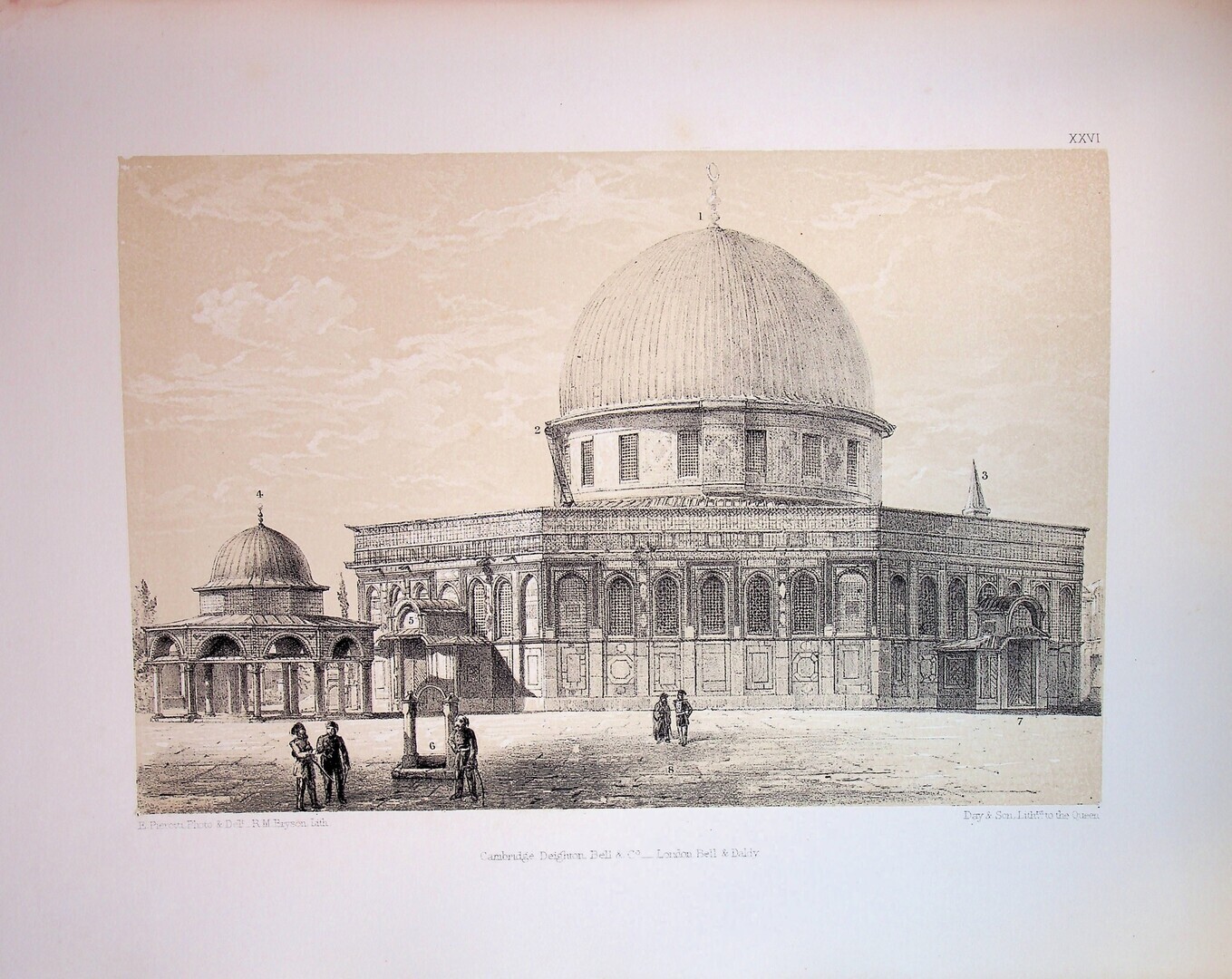Jerusalem Explored. Being a Description of The Ancient and Modern City, with Numerous Illustrations Consisting of Views, Ground Plans, and Sections. TWO VOLUMES.
Pierotti, Ermette.
Synopsis
MAJOR PICTORIAL DOCUMENT ON JERUSALEM IN THE 19th CENTURY. Pierotti was a Sardinian army engineer officer who worked as an architect from the early 1850s in the Austrian Hospice and the Church of St. Anne in Jerusalem. During his work there just before the Crimean War, the Pasha of Jerusalem requested him to attempt to repair Jerusalem’s water supply, which put Pierotti in a unique position. He had full access to all areas of Jerusalem, and full access to the Al-Aqsa Mosque. He could thus enter, dig, sketch, and photograph parts of the Mosque; for the first time a Westerner had ever had the chance for this rare opportunity.
During the late 1850s and 1860s he worked with French scholars, in particular Félicien de Saulcy, and developed an interest in current archaeological and antiquarian matters. In 1864 he published this work which he dedicated to the Emperor of France, Napoleon III. He refuted the ideas of the British scholar Ferguson in his work Holy City. Accordingly a cry of plagiarism went up; British scholarship was under threat posed by France, and British Holy Land interests were at risk from those of the French government.
Pierotti’s photographs of Jerusalem are considered to be amongst the earliest. The second volume of this book contains lithographs made after some thirty photographs, drawings, and maps. He did not limit his interest to architecture only; in 1864 he published a study in ethnography entitled Customs and Traditions of Palestine.
Bibliographic references: Moscrop: Measuring Jerusalem p. 63-64; Blackmer 1309; Tobler p. 189.








